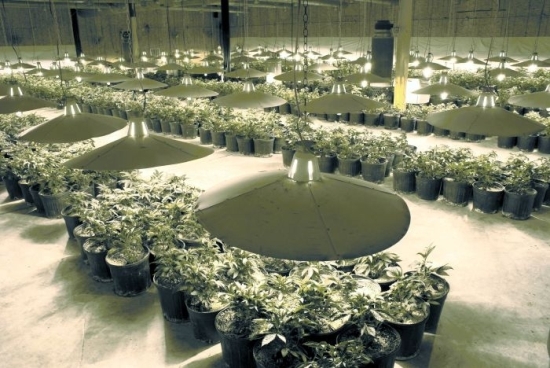THCDigest
Member
Hey fellow green gardeners! I wanted to put out all the information I think is necessary for anyone to know when growing weed indoors hydroponically. This is the only way Ive ever grown marijuana personally, and Im now working on my 6[SUP]th[/SUP] successful grow.
Im not here to say that my techniques are the best that ever existed, all I can say is that they are effective and give me enough yield that I never have to buy my own weed, which was really my only goal when I started growing. I just want to provide the answers for a lot of questions that I had starting in hopes that itll help someone else who is wondering the same things.
I break the process of growing with a hydro setup into 7 sequential steps:
Step 1 Hydroponic Systems
Step 2 Indoor Lighting
Step 3 Marijuana Seeds
Step 4 Nutrients & pH Balance
Step 5 Growing Environment
Step 6 Root Rot & Maintenance
Step 7 Harvesting, Drying, and Curing
I wanted to not only give what I think are the absolute essentials to know and grow successfully, but I wanted to give some sort of order to it, so people can go in steps. One of the hardest parts of starting for me is I wasnt sure where to start; it can be very intimidating. If you go 1 step at a time through this process though, it should be much easier for someone who is newer to digest and implement.
All of this information can be found in my free guide on how to grow weed at THC Digest, and you can also sign up to the THC Digest subscriber list and get access to a free PDF copy of the guide as well.
Marijuana Growing Journal
I also just started doing growing journals complete with videos as well as pics, which will show you exactly what Im doing and how Im doing it. I do a new entry every week, so by the end of this grow, you will be able to see my whole process of growing from seed to buds.
Coming Soon (by end of July)
Help Me Improve This Info!
If you believe Im missing a key piece of information or want clarification on a specific point, you can post below or message me directly. Theres probably some things Im missing and Im completely overlooking them, so feel free to point out my errors, so I can fix them for the next person to read.
Im trying to give a brief overview of whats involved here, which for some people might be all theyre looking for, but if you want to dive deeper into a specific subject, you can always head to THC Digest to get further explanation, images, etc.
Happy Growing!
Im not here to say that my techniques are the best that ever existed, all I can say is that they are effective and give me enough yield that I never have to buy my own weed, which was really my only goal when I started growing. I just want to provide the answers for a lot of questions that I had starting in hopes that itll help someone else who is wondering the same things.
I break the process of growing with a hydro setup into 7 sequential steps:
Step 1 Hydroponic Systems
Step 2 Indoor Lighting
Step 3 Marijuana Seeds
Step 4 Nutrients & pH Balance
Step 5 Growing Environment
Step 6 Root Rot & Maintenance
Step 7 Harvesting, Drying, and Curing
I wanted to not only give what I think are the absolute essentials to know and grow successfully, but I wanted to give some sort of order to it, so people can go in steps. One of the hardest parts of starting for me is I wasnt sure where to start; it can be very intimidating. If you go 1 step at a time through this process though, it should be much easier for someone who is newer to digest and implement.
All of this information can be found in my free guide on how to grow weed at THC Digest, and you can also sign up to the THC Digest subscriber list and get access to a free PDF copy of the guide as well.
Marijuana Growing Journal
I also just started doing growing journals complete with videos as well as pics, which will show you exactly what Im doing and how Im doing it. I do a new entry every week, so by the end of this grow, you will be able to see my whole process of growing from seed to buds.
Coming Soon (by end of July)
Help Me Improve This Info!
If you believe Im missing a key piece of information or want clarification on a specific point, you can post below or message me directly. Theres probably some things Im missing and Im completely overlooking them, so feel free to point out my errors, so I can fix them for the next person to read.
Im trying to give a brief overview of whats involved here, which for some people might be all theyre looking for, but if you want to dive deeper into a specific subject, you can always head to THC Digest to get further explanation, images, etc.
Happy Growing!





